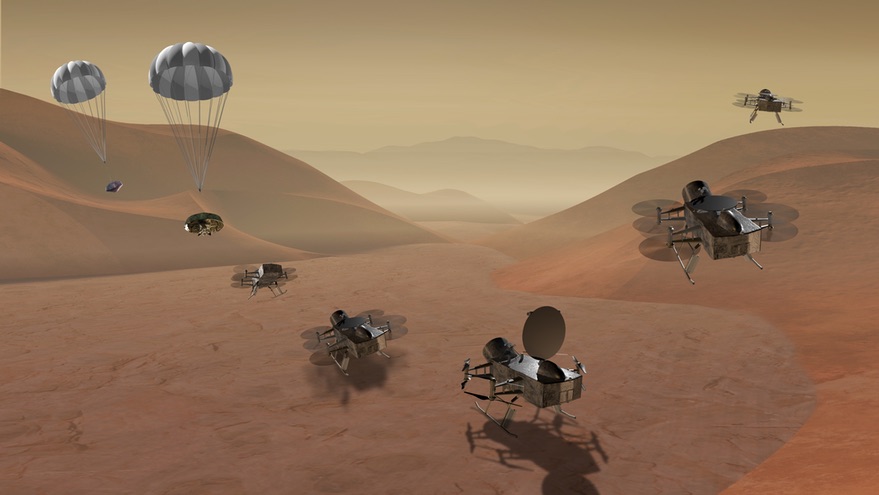Products You May Like
WASHINGTON — NASA has delayed the launch of a mission to Saturn’s moon Titan by a year, citing budget challenges created by the coronavirus pandemic.
In a Sept. 25 statement, NASA said the Dragonfly mission, which had been scheduled to launch in 2026, will instead launch in 2027. The change in launch date will not otherwise affect the design of the mission or the science it will perform.
NASA selected Dragonfly in June 2019 as the next mission in its New Frontiers program of medium-sized planetary science missions. Dragonfly will land on Titan, Saturn’s largest moon with a dense atmosphere, then use a set of rotors, like a drone, to fly from one location to another across its surface.
In the statement, NASA said the decision to push back the launch a year “is based on factors external to the Dragonfly project team, including COVID-19’s impact on the Planetary Science Division’s budget.” The agency didn’t state what that delay would do to spending for the mission in fiscal year 2021, for which NASA originally requested $95.8 million, or the overall mission cost, which is capped under the New Frontiers program at $850 million, not including launch and operations.
“NASA has the utmost confidence in the Dragonfly team to deliver a successful mission that conducts compelling science,” Lori Glaze, director of NASA’s planetary science division, said in that statement.
NASA officials had warned that efforts to address the effects of the pandemic would have costs to its science programs that would need to be accommodated somehow by the agency. NASA will allow scientists to apply for augmentations for existing awards, with a priority to support students and early-career professionals. There have also been costs for missions that had to just work plans because of the pandemic.
There was no sign, though, that Dragonfly was in danger of a delay because of those issues. At a Sept. 2 meeting of the Outer Planets Assessment Group, Elizabeth “Zibi” Turtle, principal investigator for the mission at the Johns Hopkins University Applied Physics Lab, said early design and testing work on the mission continued despite a shift to largely virtual work caused by the pandemic.
“We’re on track and making good progress despite the limitations in the work environment right now,” she said. Design work and mission planning activities continued online while some testing, with COVID-19 safety protocols in place, continued in labs. But, she noted, “we’re tracking the impacts due to COVID on aspects of the schedule.”
Dragonfly’s launch had previously slipped a year. When NASA selected the mission, it decided to shift the launch from its proposed date of 2025 to 2026 in order to give the mission more time to address technical issues. That delay did not affect the mission’s arrival at Titan in 2034 because of changes in the trajectory. NASA did not state when Dragonfly will arrive at Titan with the new 2027 launch date.
